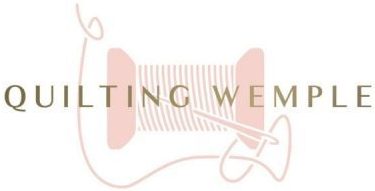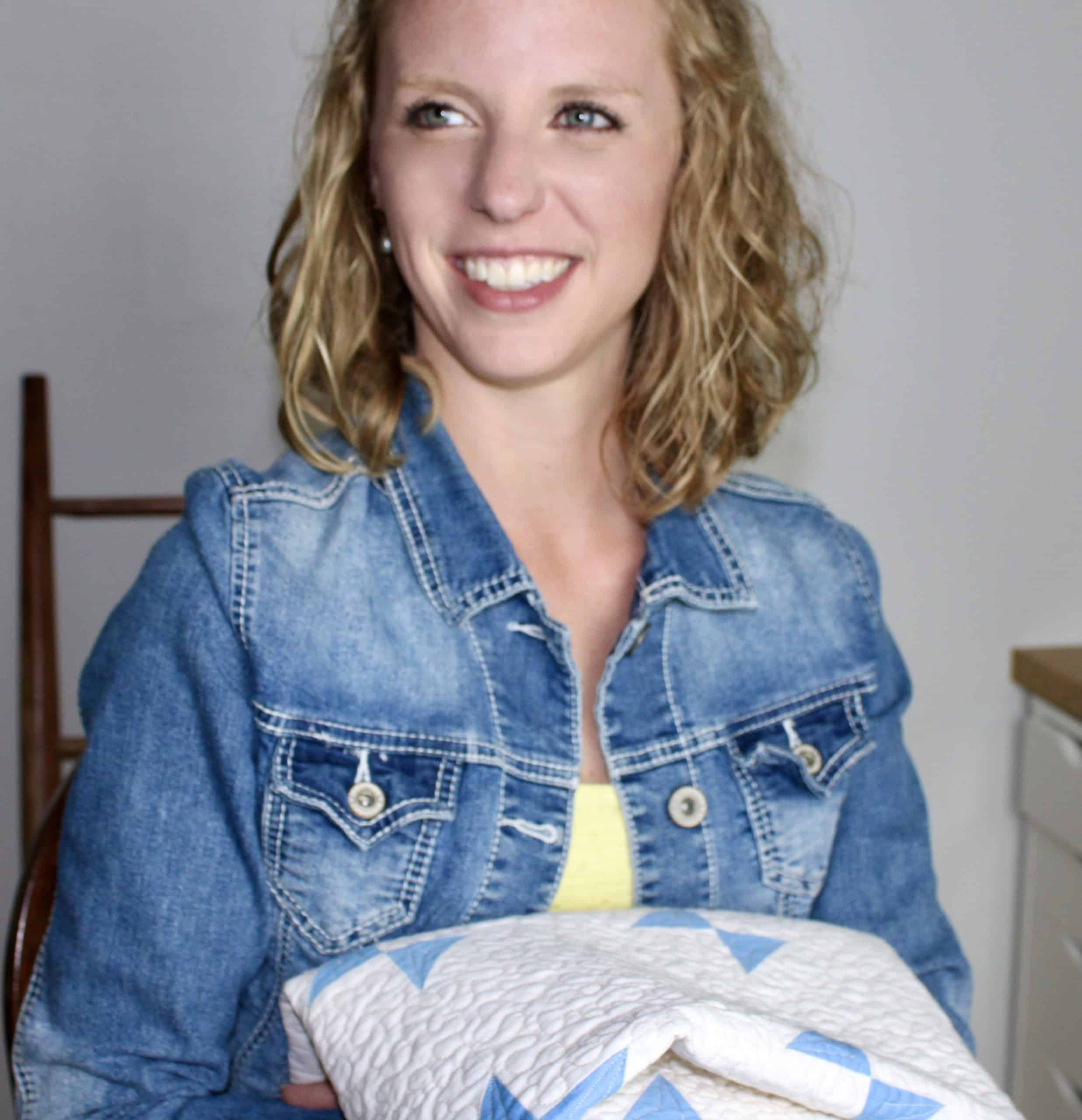Free motion quilting can be a pain to learn.
There’s a fine line between needing to pay more attention to what you’re doing, and paying so much attention to every stitch that you are overthinking it.
If you’re like me when I first started, you may find yourself frustrated with having to keep track of so many things that you get overwhelmed with the process and ultimately scrap the FMQ idea.
The best way to push past this stage of learning FMQ is to practice until you can put certain things on autopilot.
Not having to be worried about whether you put a corner in a place where it doesn’t belong, or whether you DIDN’T put a corner where you actually intended is one of those things you can muscle memory out so you have less things to think about when you actually have a real quilt under the needle.
To practice the basic skills that are universal to many different FMQ designs, today we’re looking at a list of simple quilting meander practice exercises that break down each of these concepts and help improve your free motion quilting, one practice swatch at a time.

What is a meander?
A meander is a simple design that repeats itself, or builds off itself, within a certain area of your quilt until it fills the entire space in.
The designs are made to be more improvisational and travel in any direction, so the idea is to repeat the design in every direction until you’ve filled in all the free space in that area.
They generally don’t have a direction they flow in, but can expand in any direction needed.
You can use this meander quilting method as an all over quilting design that runs directly over the quilt top disregarding the piecing. This will give your quilt an all-over texture and, at a larger scale, is a great way to finish a quilt quick.
Another alternative is to use it in smaller quantities between larger features of a custom quilting design.
Pairing denser meanders with a more open design will help create a background and foreground look to your quilting allowing your featured designs to stand up and draw more attention.
The beauty of meanders is that they can stand on their own so whether you have a pieced quilt top or just a plain piece of practice fabric, meanders are a perfect tool to practice FMQ skills.
5 Meander Practice Exercises To Improve FMQ
The trick to FMQ, is getting the basics right. It doesn’t matter what design you are working on, without having the foundational skills down (or at least being aware of them), you’ll run into the same struggles every time.
So what concepts will these meander practice exercises help you with in order to successfully FMQ?
- Smooth curves with no points in them
- Sharp points with no curves in them
- Consistent spacing
- Consistent stitch length
- Consistent scale
In the grand scheme of an all over meandered quilt, you do not need to be perfect on every one of these points.
As long as you are keeping them in mind, and keeping the mindset that “close enough is good enough” then with each quilt you’ll be improving left and right.
Once you know what skill to focus on in each of these meander practice exercises, you’ll start to recognize them in every FMQ design and be able to pick up new designs faster and flatten out the FMQ learning curve.
The Stipple – for smooth curves

You’d think a simple curvy line wouldn’t be so helpful, but it is!
If you’ve never tried FMQ, the stipple is (in my opinion) the best place to start.
One of the most common things you’ll run into in your first few attempts of free motion quilting is just how different free motion quilting feels compared to regular stitching with your feed dogs up.
It feels a bit reckless and loose, and you quickly realize what it means to have full control of a piece of fabric under the sewing machine.
Start by getting used to the freedom of movement by just doodling a curve that moves back and forth filling in the space that doesn’t cross over itself.
You’ll quickly find that as you decide how to get in and out of the nooks and crannies that you’ll end up with distinct corners in your curves.
This meander is great for learning how to multitask physical stitching with deciding where to go next.
As you practice you’ll find it easier to move in a smoother manner without accidentally adding corners where they don’t belong.
Making Points Pointy – The Maze

As surprisingly hard as it is to avoid corners, it’s almost just as hard to intentionally make them where you do want them.
After learning the curvy stipple, you get so into the groove of a curve that the new task of making a corner can have an unnatural feel to it.
All of a sudden where it was so easy to get a sharp corner where you didn’t want it, you end up with messy rounded corners when you are actually trying.
Consider it a new challenge. Learning to intentionally stop.
To get a sharp corner, stop at the point and put an extra stitch right in the corner to get that super sharp look.
Using the maze meander you’ll get a lot of opportunities to practice those sharp corners and getting them where you want them, when you want them.
Bonus points if you section off a practice swatch to practice transitioning back and forth between the stipple and the maze on demand.
Consistent movement – Loop de Loops

Once you’ve got down curves vs. corners, it’s time to master the way you create them.
The key to good free motion quilting is coordinating both your feet and your hands.
If your hands move faster than your feet, you’ll end up with wildly different stitch lengths, and you’ll also likely end up with whats called eyelashing.
This is where you’ve moved the quilt so quickly (usually around the tightest part of a curve) that you pull the bobbin thread through the top creating the look of eyelashes in the stitching.
Related:
Eyelashing in Quilting
Alternatively, if your hands are moving too slowly compared to your feet, you’ll end up with teeny tiny stitches, potentially knotting up thread inside your machine or creating holes in your fabric.
Use the loop de loop meander to get overly comfortable with coordinating the pedal and your hands until you don’t have to even think about it.
Consistent spacing/density – Watery Meander

This meander is a simple back and forth motion where you quilt horizontally until you get to a point where you want to turn around, you make a “C” to advance up to the next row and then you quilt back the opposite way running parallel to the first line you already made.
The skill we’re trying to master with this meander is keeping consistent spacing between our lines of stitching.
As you quilt back the opposite way, do your best to keep the distance between your first line of stitching and your second the same the entire way back until you decide to advance to the next row.
You can also quilt across the top of a row and work your way back down to fill in.
The goal here is to keep your quilting density consistent.
One of the reasons computerized quilting looks so perfect is because of its consistency in its spacing between the lines of quilting.
While you only have to be close enough, it takes a bit of practice to get to a point where “close enough” is indiscernible to the human eye.
Our goal is to emanate that and try and be as consistent as possible. Practicing the watery meander is a great way to learn to keep spacing in mind.
Consistent Scale – Box Meander

The last on this list of meander practice exercises is the box meander.
Your goal for this meander is to keep your boxes all (roughly) the same size.
Why are there two density meanders on this list? Because density between elements and density of your elements are two different things.
You can keep the perfect density between your boxes, but if your boxes grow significantly larger or smaller over the course of your meandering, you’ll notice it immediately when you take a step back.
Size creep is a common issues beginner quilters run into often. More often than not your designs tend to get smaller over time if anything.
When you are so up close and personal with the 4 inch window thats right underneath your needle, you end up wanting to pack all the details into that 4 inch square.
Standing back though, that 4 inch square ends up disappearing into the overall size of your quilt and you can’t actually see all that detail you put into it.
This box meander will help you keep design size in mind as you work your way across your practice swatch.
Difference between stippling and meandering

When first learning about machine quilting you might hear the words stipple and meander used almost interchangeably, so whats the difference?
Every stipple is a meander, but not every meander is a stipple.
Stippling is a style of meander where you stitch a squiggly line that doesn’t cross over itself and fills in open space.
The reason the word stippling is used so often is because it is very often a quilters first free motion quilting design.
It’s easy, there is only one rule (don’t cross over your stitching) and is incredibly beginner friendly.
In comparison a meander is the broader, umbrella term, for any filler style quilting that builds on itself and repeats a shape or motif.
Benefits of using a meander design
Meanders are one of the most versatile quilting designs because it can be scaled up and down to fill the space you have available.
A meander can be used across an entire quilt with minimal effort and marking because you can just keep going in any direction filling in with the design.
Alternatively, it can be used in-between larger motifs to make a contrast in the densities causing the larger motif to stand out on the quilt. This type is more of a filler style use for meanders allowing you to create depth to the quilting.
The beauty of doing meander practice exercises is that it gives you a lot of repetition quickly on a certain design or technique.
By using a meander across a whole quilt you’ll have a LOT of time and repetition to work on many of the techniques and factors mentioned earlier that contribute to a professional looking finish to your quilts.
So give some of these meander practice exercises a try, even if on a practice swatch and watch how quickly you develop your FMQ skills from beginner to “I got this!”.








0 Comments